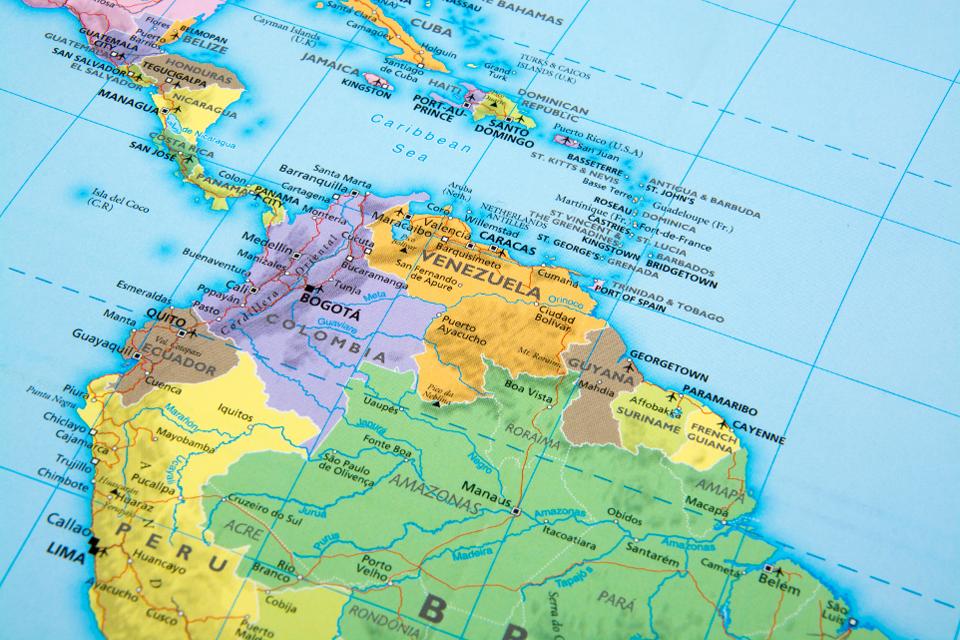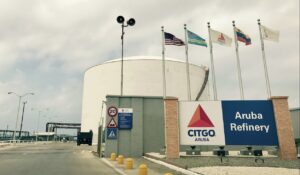
(Argus, 4.May.2020) — The government of burgeoning Latin American oil producer Guyana received $4.9mn in its first oil and gas royalty payment from gross production to date, deposited on 28 April into the National Resource Fund (NRF).
Guyana began crude oil production in December and has produced more than 8mn bl of medium sweet Liza crude so far, with daily output estimated at 75,000-80,000 b/d, according to Guyana’s department of energy director Mark Bynoe during a press conference today.

Output from the Liza-1 field was expected to reach a 120,000 b/d peak by the third quarter of this year, but snags in the commissioning phase have delayed that goal until early next month.
The production peak will come just weeks after the Guyanese government is expected to load its second allotted parcel of Liza crude, attained through a production-sharing agreement with the Exxon-lead consortium operating in the deepwater Stabroek block that includes the Liza-1 field.
The roughly 1mn bl cargo, expected to load in the third week of May from the FPSO Liza Destiny, is part of a three-cargo deal with Shell Western Supply and Trading.
Shell is to receive the first three Liza cargoes of the government’s share of medium sweet Liza production, which Shell won in December in a restricted tender. The Guyanese government loaded its first allotment of crude on 19 February and received a Brent-linked $55/bl for it.
Bids are being assessed for a one-year contract to market the government’s remaining share of crude. Of 34 companies that expressed interest when the tender closed last month, the country hopes to narrow the field to 20 companies that will be asked to submit a technical proposal and a financial offer, Bynoe said today.
“Liza crude has touched at least 20 different refineries,” Bynoe said. “And this doesn’t include what the operators are lifting. We are beginning to see that the Liza crude is indeed having a global impact.”
Election recount plan stumbles
On the political front, Guyana plans to start a recount of votes from disputed 2 March parliamentary elections, but the process is already mired in a fresh controversy.
International election observers from the Atlanta-based Carter Center are accusing Guyana’s government of denying them entry by refusing to open the country’s airspace.
“The Center deployed an observer to Miami who was prepared to travel to Georgetown today, but unfortunately, his flight was denied approval to carry international election observers,” the Carter Center said today.
Guyana closed its airspace on 19 April as part of efforts to contain the Covid-19 pandemic. But it has opened its airspace from time to time to allow entry of rotating teams from ExxonMobil.
On 1 May, election observers from Caribbean trade group Caricom were allowed to fly in. The government has not explained why the Carter Center team is not being allowed into the country.
The Carter Center left Guyana on 20 March after describing a preliminary vote count as “non-transparent.” The group said its members had been harassed and threatened and that this “undermined the credibility of the electoral process.”
The US and Canadian governments urged Guyana to allow the Carter Center team to participate in the observation process.
Guyana’s elections commission had earlier declared that the ruling coalition led by president David Granger’s PNC party had won the election. But the main opposition PPP led by former president Bharrat Jagdeo denounced the vote as fraudulent, while international observers also expressed concern for the integrity of the process.
The counting of votes has since been set back by a series of injunctions in the courts.
The outcome of the vote could influence the development of the oil sector in the South American country.
The ruling coalition has rejected the PPP’s pledge to review all licenses signed after ExxonMobil’s contract, potentially impacting Chevron, Total, Repsol, Eni and Tullow.
ExxonMobil kicked off production on the Stabroek block in December and is projecting output of light sweet Liza crude to reach 750,000 b/d in 2020. But the forecast could be adjusted in the wake of the global oil price collapse. Still, Bynoe today said there is no plan to shut-in oil production amid ongoing market volatility.
— Mónica Rojas and Canute James
***

